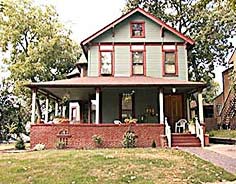
 |
||||||




| Until fairly recently, historic district commissions and review boards adopted the Secretary of the Interior's Standards for Rehabilitation to administer the local preservation ordinance without local design guidelines. If yours is one of them, please consider two important points: |
 |
Why you need specific local design guidelines.
The Secretary's Standards for Rehabilitation are very broad, general
philosophical principles developed by the federal government for reviewing
project work on individual buildings receiving federal grant funds and
tax credits. But a historic district is a collection of buildings, sites,
and settings that share a common history, appearance and special meaning
in time and place. Typical work projects in historic districts have a
visual impact on the distinctive character of adjacent structures, streetscapes,
and the larger setting. It makes better administrative sense to create
a local—specific—design guideline based on principles of the
Standards than use the Standards by themselves to review a work proposal
for a Certificate of Appropriateness.
Better still, include all four approaches to
work in your guidelines.
A second, even more important, issue is calling all work in historic
districts "rehabilitation" when the work is, in fact, preservation
or restoration—or even reconstruction. It
can't all be rehab, can it?
The answer is "no." For instance, if project
work is proposed to restore a landmark building for public interpretation,
then the Standards for Restoration should be used from start to finish.
If work in your district is not all rehabilitation, then your ordinance should reflect broader criteria and the local design guideline you develop should include additional interpretive guidelines. The model you can easily use locally is The Secretary of the Interior's Standards for the Treatment of Historic Properties with Guidelines for Preserving, Rehabilitating, Restoring, and Reconstructing Historic Buildings.
---------------------------------